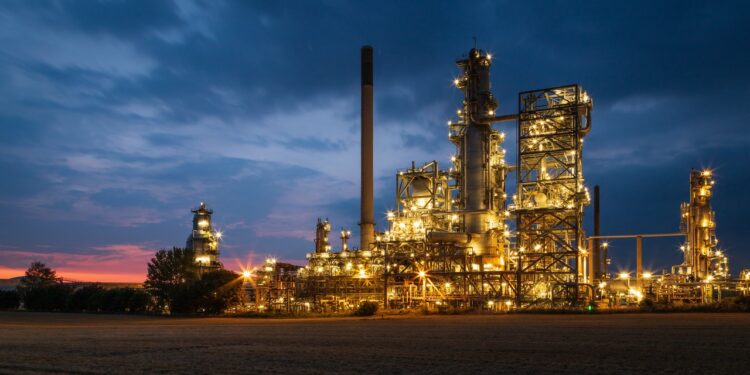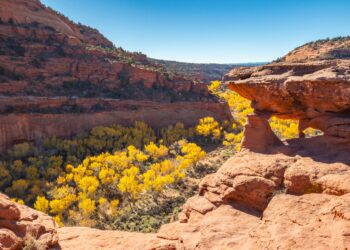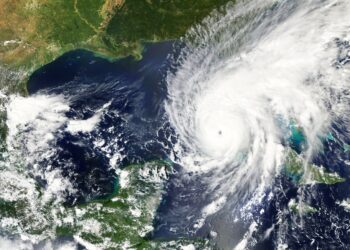Wilmington, a predominantly working-class and Latino immigrant community of more than 50,000 people, has some of the highest rates of asthma and cancer in the state, according to a report by the non-profit Communities for a Better Environment.
It’s no coincidence that the city is surrounded by six oil refineries, as well as being wedged in by several freeways and the ports of L.A. and Long Beach.
California, the seventh-largest oil-producing state in the U.S., has no rule or standard for the distance that active oil wells need to be from communities. For many Californians, especially Black and brown residents, acrid smells, noise and dirt from oil production is part of the neighborhood.
Walking around Wilmington, pumpjacks are visible in public parks, next to schoolyards where children play and outside of people’s windows at home. At night, the sky is lit orange from refinery flares.
The discovery of oil in the 1920s led to significant population growth in the area. People built and bought houses next to the oil fields and refineries, which employ thousands of residents in the area. In L.A. County, the industry employs about 37,000 people, according to a report by Capitol Matrix Consulting.
More than 2 million California residents live within 2,500 feet of an operational oil and gas well and another 5 million — 14% of the state’s population — are within 1 mile, according to an analysis by the non-profit FracTracker Alliance.
Residents are especially vulnerable in L.A. County, which is home to the Inglewood Oil Field. The 1,000-acre site is one of the largest urban oil fields in the country and is owned and operated by Sentinel Peak Resources. More than half a million people live within a quarter mile of active wells that release hazardous air pollutants like benzene, hydrogen sulfide, particulate matter and formaldehyde.
Research shows that people who live near oil and gas drilling sites are exposed to harmful pollution and are at greater risk of preterm births, asthma, respiratory disease and cancer.
Residing near oil wells is linked to reduced lung function and wheezing, and in some cases the respiratory damage rivals that of daily exposure to secondhand smoke or living beside a freeway, according to a recent study published in the journal Environmental Research.
Another study, published in the journal Environmental Health Perspectives, analyzed nearly 3 million births in California of women living within 6.2 miles of at least one oil or gas well. The authors concluded that living near those wells during pregnancy increased the risk of low-birthweight babies.
Environmental advocacy groupshave urged California Gov. Gavin Newsom to instate a 2,500-foot buffer zone, or setback, between fossil fuel operations and homes and schools. This year, a bill to ban fracking and instate a buffer zone failed in a state committee vote.
Other oil-producing states including Colorado, Pennsylvania, and Texas have already implemented some form of buffer zone between properties and wells.
In 2019, Newsom ordered his regulators to study such a health-and-safety rule, but they didn’t meet the December 2020 deadline for action. State oil regulators also missed a more recent deadline in the spring to release new regulations that would help protect the health and safety of people living near drilling sites. The California Geologic Energy Management Division, which oversees the state’s fossil fuel industries, hasn’t yet set a new timeline for regulations.
Meanwhile, the governor since 2019 has approved roughly 9,014 oil and gas permits, according to an analysis of state data by Consumer Watchdog and FracTracker Alliance.
“Frontline communities have been waiting for very basic protections from dangerous oil and gas projects for too long,” said Hollin Kretzmann, an attorney for the Center for Biological Diversity, which recently sued the state for approving thousands of drilling and fracking projects without the required environmental review.
“A safety buffer is the bare minimum,” Kretzmann said. “The fact that our state continues to delay is frustrating and completely unacceptable.”












